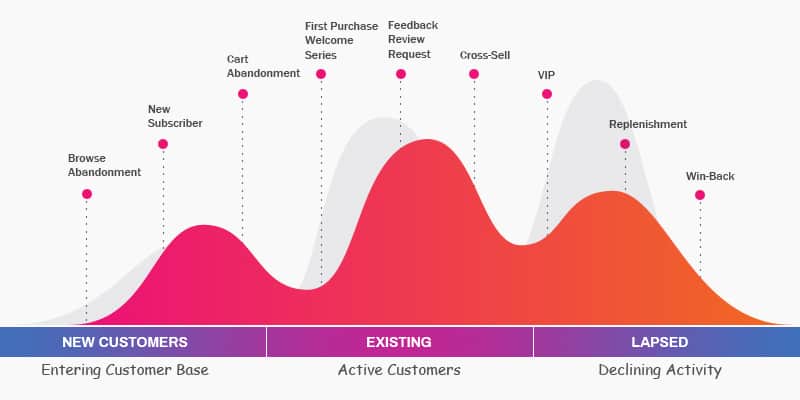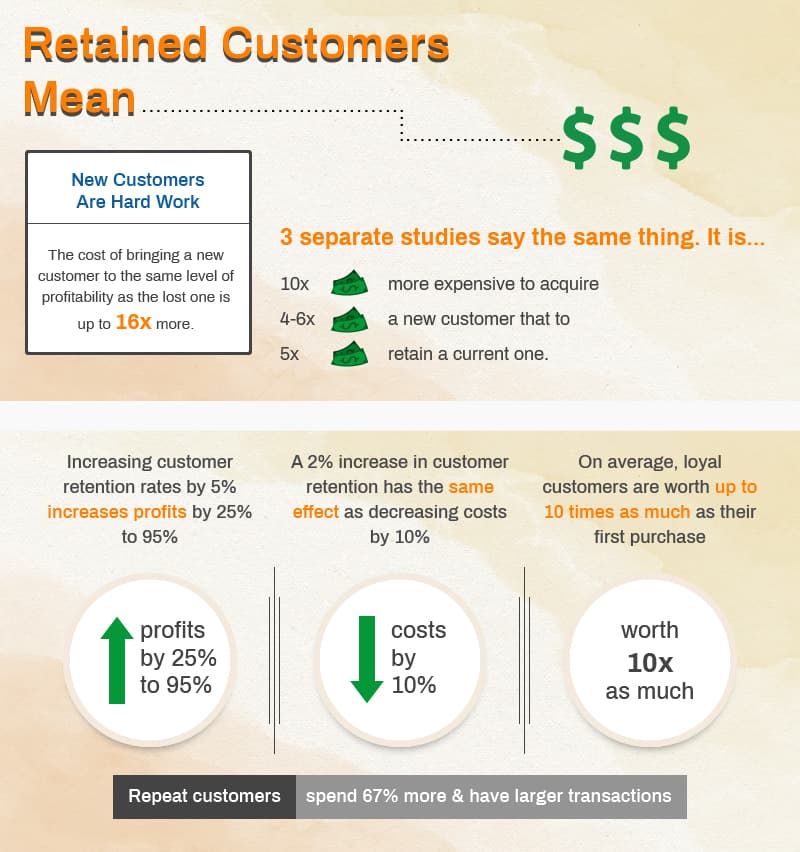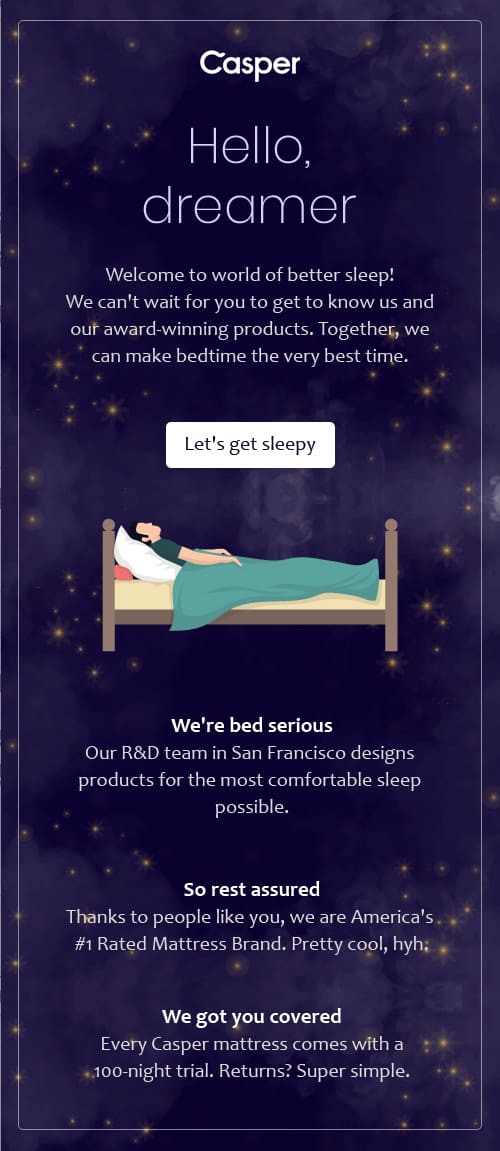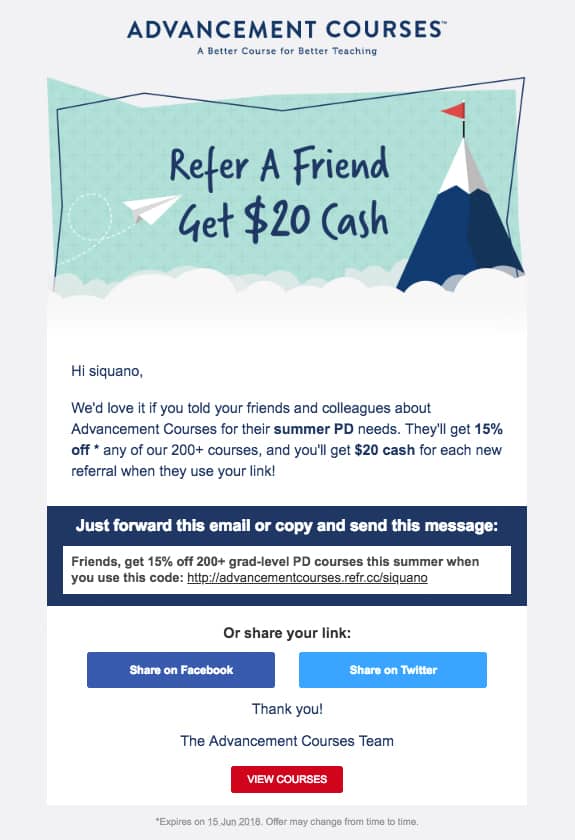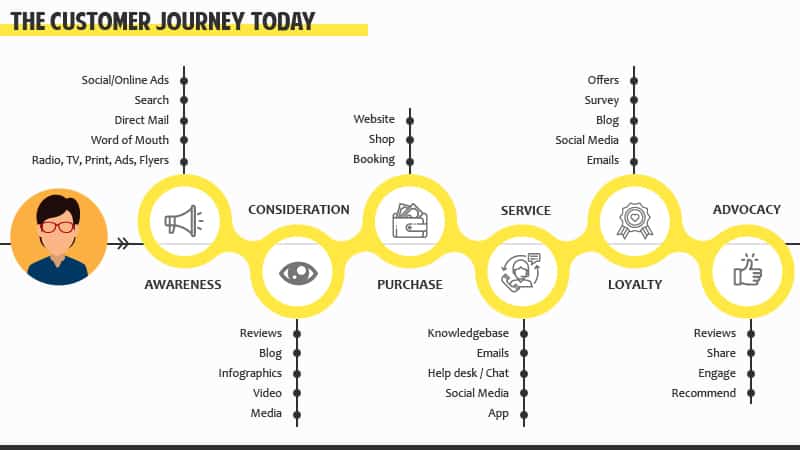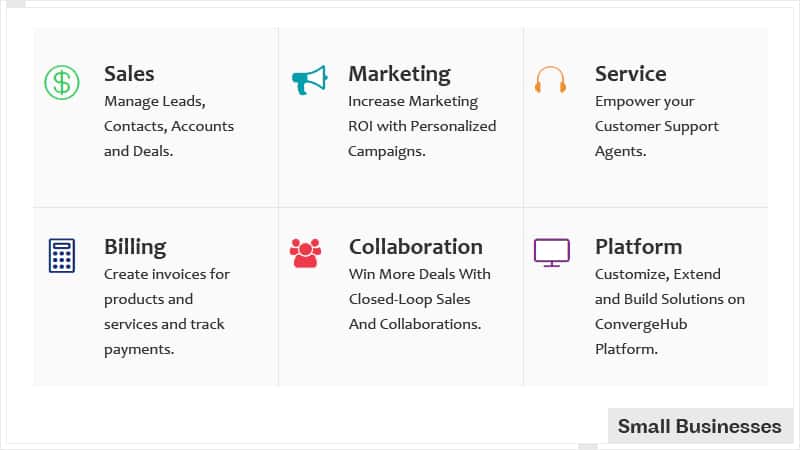Email can be an effective way for small and medium businesses to drive their sales. Emails offer higher conversion rates, are more cost-effective than other marketing tactics, and are easy to monitor and measure. And, with today’s marketing technology, it is also easy to use email more strategically and automate the entire process.
But if you think that just sending emails every week or an abandoned cart email is going to give you dividends then you are in for a huge disappointment. Why? Because we live in the world of personalized experiences and engagements. The one-size-fits-all strategy is dated. Your customers are ready to pay a premium for personalized experiences. Your customers are at different stages in their lifecycle. Each one of them has unique needs.
You need to understand those needs and your emails and its contents need to cater to those needs. Then and only then it will be effective and drive your ROI.
In short, you need to use Lifecycle Marketing with your email marketing campaigns.
What is Lifecycle Marketing? And how do I use emails with it?
Before understanding Lifecycle Marketing, let’s pause and first understand the customer lifecycle. The customer lifecycle describes the various stages your customer goes through when they are associated with your company. It starts with the first time they know about your company- like seeing your ad or hearing about your company from a friend or a colleague. The customer lifecycle continues till the customer has some relationship with your company or drops off and moves to your competitor.
The customer lifecycle is designed to help businesses address their customer’s specific needs as they progress from being a prospect to a buyer to a brand advocate. The customer lifecycle is not linear and it also includes leads that didn’t convert, customers who moved to other brands, and more.
Marketing based on a customer’s lifecycle stage and needs is called Lifecycle Marketing. And to use Lifecycle Marketing successfully with email marketing, you need to create email campaigns based on lifecycle stages of the customer.
To be used with Lifecycle Marketing, the email campaigns must be designed as per the industry, buyer personas, and your specific goals. It allows you to send a chain of emails to nurture your prospects and help them move to the next stage of the life cycle. Businesses use Lifecycle Marketing with email campaigns to educate prospects, influence the buying decision, connect with lost customers, retain existing ones and get repeat business.
What are the stages of the customer lifecycle journey?
Each stage is important in Lifecycle Marketing, and that’s why a basic understanding of each stage helps. Here a 4 key stages in a customer’s lifecycle-
- Awareness – When your prospect first learns about your company and products/services
- Evaluation – When the prospects evaluate your offerings and decide on whether to buy or not
- Purchase – When they make a purchase and become your customer
- Advocacy – When a satisfied customer is willing to refer your company to family, friends, and others
While there are 4 stages in a customer lifecycle, while designing your email marketing campaigns to go along with Lifecycle Marketing, you may break your customers into something simple like prospects, customers, and advocates. You might label those groups something different like new, existing, and lapsed. It doesn’t really matter so long as you divide them as per a strategy.
Is using Lifecycle Marketing with email campaigns effective?
Absolutely as numbers tell us:
Lifecycle email marketing offers various benefits to businesses including-
- Drive sales by helping you in lead nurturing and conversions
- Helps in upselling and cross-selling
- Improves customer retentions and as the above graphic shows customer retention means more business
- Gets your repeat customers
- Improves brand loyalty
- Enhances customer engagement and experiences
Strategy for using Lifecycle Marketing with email campaigns
Let’s consider the various lifecycle stages and discuss the email strategy for each:
1. Awareness
Most small businesses get it wrong by expecting a customer who just saw your ad or found your website on Google or any other search engine to buy immediately. Then they worry about low conversions from prospects.
It’s not that simple. Some new prospects can buy on their first visit. Others would like to know more about your company and its products and services. It usually takes multiple experiences with your brand before prospects are ready to buy.
At the awareness stage, your goal should not be to sell but to cater to the specific needs of the visitor and nurture them. You can use welcome emails to nurture first-time visitors who have subscribed to your company’s blog or opened an account. The welcome emails should contain information about your company and the problem your products/services solve.
Welcome emails are highly effective-
- 76% of customers expect a welcome email immediately after subscribing to your list.
- Customers who get a welcome email engage 33% more with the brand
Here’s a welcome email from Casper. Look how smartly they talk about their products without being salesy. It introduces you to the products and then provides a link for you to know more.
TAKEAWAY TIP
Whether you’re an online business or have a physical store, it is important to collect the email addresses of prospects who visit your store for the first time. Offer something free such as an eBook, product sample, and free tool, etc., in exchange for the email. Your lifecycle email marketing strategy depends on building a list of emails of your prospects and customers.
2. Evaluation
You’ve got the customer to the second stage of the lifecycle. This stage is important as your customer will evaluate your products/services, map its features with her needs and compare it to the competitors. It is a good strategy to help them make a decision. Share with them your product brochure and videos, case studies, customer testimonials, and comparison sheets, etc. For B2C businesses, discounts and free gifts also play a big role in influencing the customer’s decision and nudge her to buy your product/service.
TAKEAWAY TIP
Call To Actions (CTAs) are important in every email you send. Ensure that it is clear and visible in your email copy. Give it prominence by adding color and other design elements.
3. Purchase
Your prospects have bought from you. What next? Plenty to do. Now is the time to come good on your promise. Show your customers that you care for them and don’t want to just sell.
Here’s what you can do-
- Immediately send a ‘ThankYou’ email with the invoice, delivery information, customer support details, and return policy.
- Cross-sell relevant products in the next email.
- Inform them about new features in the product.
- Take feedback about the products.
- Nudge them to buy again with a discount offer/free gift.
Cart abandonments
Cart abandonment is a common situation in online business. In cart abandonment, the prospect adds a product to the cart and then leaves the website without completing the purchase. The cart abandonment rate is as high as 75%. This can happen for several reasons including the prospect reconsidering his buying decision, payment process not working, prospect not sure about the security of the website and so not wanting to risk sharing credit card details, and more.
An abandoned cart email is an effective way to get the lost sales. And they are very effective.
To encourage customers to complete the purchase, you can automate abandonment emails. Send the emails two to three times, one after the cart abandonment happens and the other after some intervals. Your cart abandonment email should inquire the reason for cart abandonment, offer an alternative process if available, access to customer support, and some encouragement in the form of free shipping or discount.
TAKEAWAY TIP
Don’t leave your customers after their first purchase. Keep engaging with them so that you continue to occupy their mind space and they turn to you whenever they need your products/services.
4. Advocacy
When a customer has been with you for some time and is positively responding to your emails then it’s time to take her to the next stage of the life cycle. ‘Advocacy’ is the last stage of the life cycle but is the most important as customers in this stage have a multiplier effect on your sales. They are ready to refer you to their family, friends, and others in their personal network.
To make the most from this stage, you need an attractive referral program that incentivizes your customers to refer.
You can further incentivize loyalty by offering your best customers exclusive and early access to your new launches, premium content, loyalty bonuses, and more. People like VIP treatment. Make your loyal customers feel special.
TAKEAWAY TIP
Always enable social media sharing of the referral programs. Encourage your customers to share the referral link on their social media accounts. You can also create ’embed links’ for your customers to add in their email signatures, blogs or websites, etc.
Bring back lost customers
Every business loses customers for one reason or another. But, you should try and win them back. You can send an automated email reminding them about your association, the product/service they bought and end with an incentive.
Lifecycle Marketing with email campaigns: tips & tricks
- Write good email copies. It should be clear, simple, and free from grammatical errors. Design it well.
- Use both discounts and non-discount type incentives (free shipping, exclusive or early access, etc).
- Create urgency with your emails and offers.
- Always give priority to your customer’s needs. Lifecycle email marketing is about them. Not your business goals.
Lifecycle Marketing Needs Customer Lifecycle Management Software
To run successful Lifecycle Marketing campaigns while combining them with email marketing you would need CLM software. For high-converting successful Lifecycle Marketing emails, you need 2 things- one, information on your customer’s lifecycle and her needs, and second, a software to send automated emails. While an email automation software or a CRM is good at sending automated emails but won’t be able to provide you with information on the customer lifecycle stage and her needs.
And that’s why we’ve built ConvergeHub, a Customer Lifecycle Management CRM that does both. It allows you to manage your entire business, Sales, Marketing, Customer Support, and Billing and provides you with detailed information on a customer’s lifecycle stage and her needs. You can use the customer data to then build your lifecycle email marketing strategy, create emails using the various available templates and automate your emails. All with one software!
You can check out various CRM features offered by ConvergeHub here.
We are also offering a 14-day free trial where you can set up ConvergeHub and test it for real-life scenarios. Get the free trial here.






